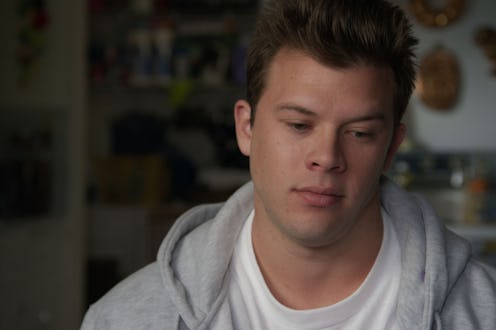Entertainment
‘American Vandal’s Suspect Strikes So Close To Home For Netflix Fans

The new Netflix series American Vandal premieres on Sept. 15, and subscribers may be intrigued by the promise of a new real-life mystery to sink their teeth into — this time about a boy named Dylan accused of a heinous act of vandalism. But is American Vandal's Dylan actually based on a real person? Or is there more to this "true crime" series than meets the eye?
In fact, there is more to American Vandal than meets the eye. As anyone who has watched the hilarious trailer knows, the series if actually a mockumentary that lampoons the self-serious true crime style of storytelling that has become so ubiquitous over the past couple of years thanks to programs like Making a Murderer, The Jinx, Amanda Knox, Casting JonBenét, The Keepers, and more. Except, in this case, the mystery isn't about a grisly murder or an unexplained disappearance or anything quite so nefarious: It's a case of vandalism, in which the cars in a school parking lot were all tagged with phallic symbols. And so the central question — and the tagline — of American Vandal becomes: Who drew the d-cks?
Knowing that the series is satire, it's easy to dismiss the whole thing as a joke and 100 percent fabricated. But, just because the story isn't true, doesn't mean the characters aren't based on real people; in fact, satire works best when it draws direct and recognizable parallels to the thing it's satirizing.
In American Vandal, Dylan Maxwell is played by actor Jimmy Tatro, whom viewers may recognize from his appearances in comedies like Grown Ups 2, 22 Jump Street, and Boo! A Madea Halloween — as well as his own popular YouTube channel, LifeAccordingToJimmy. His character is the class clown at the fictional Hanover High School in Oceanside, California. When Dylan is accused of spray painting dozens of cars with bright red phalluses, he's expelled from school but adamant about his innocence. Enter Peter Maldonado and his documentary crew trying to uncover the truth. The subject is ridiculous, the stakes are low… and the proceedings are portrayed with an incredibly straight face.
Since American Vandal is more lampooning a genre than any one specific docuseries, it's hard to pinpoint on whom exactly, if anyone, Dylan is based. It's clearer that the character making the faux-documentary — Dylan's classmate Peter — is inspired by the sort of earnest investigators embodied by Serial's Sarah Koenig and The Jinx's Andrew Jarecki. But with so many true crime shows about so many accused criminals, is there an inspiration for Dylan?
Given that its popularity helped pave the way for the current true crime mania and that it also airs on Netflix, the most obvious point of comparison is Making a Murderer. Even the MaM poster is somewhat evocative of American Vandal's, with the black-and-white portrait of the suspect and attention drawn especially to the eyes. So is Dylan based on Steven Avery?
The parallels are certainly there: Someone who is quickly suspected of being capable of the crime because of his previous brushes with the law, who is easily railroaded due to his low level of intelligence (Avery's first public defender Reesa Evans claimed that Avery's IQ was 70 and that he "barely functioned in school"), and who struggles against all odds to clear his own name. In an interview with Bustle's Jack O'Keeffe, American Vandal director Tony Yacenda admitted that MaM was a big influence. "I think structurally we modeled Season 1 off of Serial and Making a Murderer the most," he said.
If this satire is successful, you should be able to catch glimmers of those true crime inspirations in many facets of the eight-episode series, depending on your familiarity with the genre. And, Dylan may not be based on Steven Avery, specifically; he could just be an analogue for anyone who finds themselves propelled to fame via a true crime docuseries. Still, that's exactly why it works so well — because the genre is omnipresent and every viewer can relate to what they're seeing on the screen.